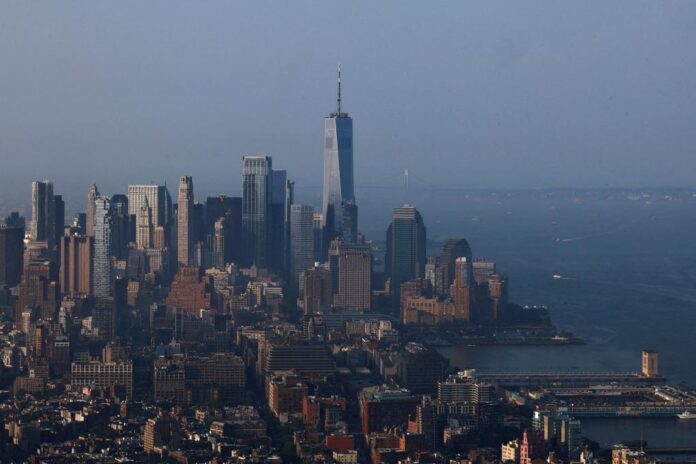
It’s crunch time.
New York City’s leaders should make some tough choices to close the fast-approaching budget gaps that come from years of adding spending without underlying revenues and the massive, unexpected costs of migrants — and not take the easy but unwise route of raising taxes.
The Big Apple’s fiscal health is extremely precarious.
Under every published projection, even after the mayor’s latest Program to Eliminate the Gap, New York City still faces a budget shortfall next year, which grows significantly in the future.
In the wake of the city’s November financial plan detailing the first of three planned rounds of PEGs, some have called to raise taxes or dip into the city’s reserves instead of making the hard, smart choices that would preserve key services, make the city run more efficiently and protect the future fiscal foundation.
While a tempting alternative that dodges difficult management and program decisions, this is not the time to broadly raise revenue or siphon reserves.
New York City’s residents and businesses already face the highest marginal personal income and business taxes; especially post-pandemic, further increases would weaken our competitiveness and could undermine the city’s recovery.
The state comptroller just confirmed the city’s population declined 5.3% from 2020 to 2022 — we shouldn’t be giving people any reason to flee or stay away.
Reserves should be protected for when we’re faced with a recession, not to avoid solving a problem partly the result of the choice to add unaffordable spending and underbudget ongoing programs.
Spending down reserves would delay fixing the underlying problems and deplete the savings that need to be there when the next economic downturn hits.
This is the time for thoughtful prioritization of cost-effective services and spending.
The city cannot provide everything to everyone.
But it can grow financially stronger as it confronts budget challenges — while continuing to help our most-in-need neighbors — if it prioritizes key services, relentlessly manages them to get results and operates effectively and efficiently.
The city’s financial plan shows a $7.1 billion gap for fiscal year 2025.
But this does not include the effects of the fiscal cliffs or other areas the city regularly underbudgets.
Adding these brings the gap up to a possible $10.6 billion, assuming the mayor’s revenue and asylum-seeker spending estimates hold.
The City Council, city comptroller and Independent Budget Office all recently projected higher revenues, and the comptroller and the IBO forecast lower spending for migrants and asylum seekers.
Still, even with billions of dollars of added resources, they all show budget gaps; the comptroller estimates that fiscal year 2025 has a $5.8 billion gap that grows to $12.2 billion by fiscal year 2027.
Mayor Adams’ directive to identify savings in agency budgets is right.
While our analysis of the previous four savings programs found that 92% of savings measures would not directly affect program services, the most recent PEG affects programs somewhat more.
Our preliminary analysis finds that 20% of the savings will touch current services.
The question is whether these are the wisest choices.
How many police officers are needed for public safety and are they all deployed directly for that purpose?
What strategies really increase student achievement?
How do we pare down to the most critical services for migrants and asylum seekers and provide them cost effectively?
Labor also should be part of the solution.
The city will not identify and be able to deliver services efficiently without the input of labor and without agreed-upon changes to work rules, job titles, health insurance and other benefit structures.
This is not the time to ask overburdened taxpayers to pay up, yet again, or to spend down the city’s savings accounts.
This is the time for collaborative, informed and thoughtful discussions about the hard choices the city faces during a time of fiscal reckoning brought on by high, unsustainable spending levels.
And the clear focus should be: maximize efficiency and minimize the impact on New Yorkers.
Ana Champeny is vice president for research at the Citizens Budget Commission.



